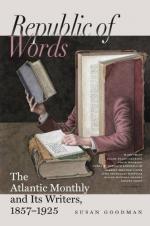Of the gallinaceous birds, the Turkey, which is found in the heavy timber in the river bottoms; the Quail, which has become very abundant all over the State, within twenty years, following, it would seem, the march of civilization and settlement; the Ruffed Grouse, abundant in the timber, but never seen on the prairie; the Pinnated Grouse, or Prairie Hen, always found on the open plains. These birds increased very much in number after the settlement of the State, owing probably to the increase of food for them, and the decrease of their natural enemies, the prairie wolves; but since the building of railroads, so many are killed to supply the demands of New York and other Eastern cities, that they are now decreasing very rapidly, and in a very few years the sportsman will have to cross the Mississippi to find a pack of grouse. The Sharp-tailed Grouse, an occasional visitor in winter from Wisconsin, is found in the timbered country.
Of wading birds, from forty to fifty species, among which the Sand-Hill Crane is very abundant, and the Great White or Whooping Crane very rare, although supposed by some authors to be the same bird in different stages of plumage.
Of the lobe-footed birds, seven species, of which is the rare and beautiful Wilson’s Phalarope, which breeds in the wet prairies near Chicago.
Of web-footed birds, about forty species, among which are two Swans and five Geese. Among the Ducks, the Canvas-Back is found; but, owing to the want of its favorite food in the Chesapeake, the Vallisneria, it is, in our waters, a very ordinary duck, as an article of food.
The waters of Illinois abound with fish, of which class we enumerate,—
Species Species
Percidae, 3 Pomotis, 2 Labrax, 3 Cottus, 2 Lucioperca, 2 Corvina, 1 Huro, 1 Pimelodus, 5 Centrarchus, 3 Leuciscus, 6 Hydrargea, 2 Corregomus, 3 Esox, 3 Amia, 1 Hyodon, 1 Lepidosteus, 3 Lota, 2 Accipenser, 3
Of these, the Perch, White, Black, and Rock Bass, the Pike-Perch, the Catfish, the Pike and Muskalonge, the Whitefish, the Lake Trout, and the Sturgeon are valuable fishes for the table.
Of the class of Reptiles, we have among the Lizards the Mud-Devil, (Menopoma Alleghaniensis,) which grows in the sluggish streams to the length of two feet; also Triton dorsalis, Necturus lateralis, Ambystoma punctata.
Of the Snakes, we find three venomous species, the Rattlesnake, the Massasauga, and the Copper-Head. The largest serpents are the Black Snake, five feet long, and the Milk Snake, from five to six feet in length.
Among the Turtles is Emys picta, Chelonura serpentina, and Cistuda clausa.
Of the Frogs, we have Rana sylvatica, Rana palustris, and Rana pipiens, nearly two feet long, and loud-voiced in proportion,—a Bull-Frog, indeed!




